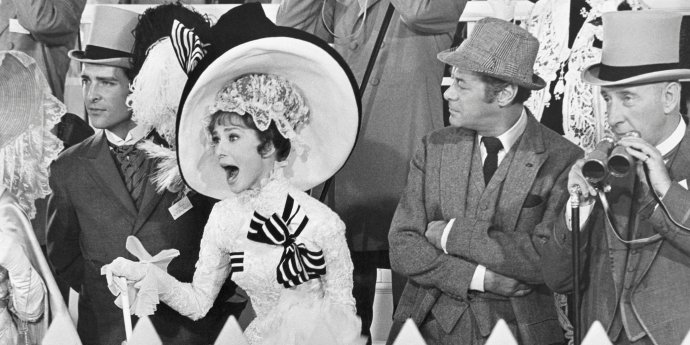Betting big on renaissance
Horse racing board in a race to make the sport sustainable and bring back the crowds.

Mike Clarke CMInstD looks across to Australia with a mixture of envy and optimism. Every weekend thousands of people are going horse racing, loving the experience and returning for more.
The scene is different in New Zealand as the racing industry continues its restructuring process and works to return to the level of popularity when it truly was the sport of kings.
Clarke and his fellow directors on the New Zealand Thoroughbred Racing (NZTR) board are putting a plan in action – born out of the alarming Messara Report in 2018.
The government-commissioned review concluded New Zealand’s racing industry was in a state of serious malaise and required urgent reform. It also warned thoroughbred horse racing was at a “tipping point of irreparable damage”.
Alarms bells were already ringing in an industry contributing $1.633 billion to GDP annually ($611m direct valued-added and $1.022b indirect value-added) and engaging tens of thousands of people as employees, participants or volunteers.

Mike Clarke
In response, then Minister of Racing Winston Peters introduced the Racing Industry Act – a “brilliant first step” in the restructuring process, says Clarke.
It included renaming and restructuring the New Zealand Racing Board, focusing the TAB as a commercial wagering operator with other responsibilities devolving to the individual racing codes. Other changes included reducing the number of racetracks – the Messara Report recommended from 48 to 28 – and upgrading the remainder; building three synthetic tracks at Cambridge, Awapuni and Riccarton; and increasing prize money or stakes.
“With the support of clubs and other participants, we are well into the restructuring process with more stakes in the industry and investment deployed to infrastructure improvements,” says Clarke. “There is more to be done, all of which will help our sport.”
Clarke says the board is looking at a vision of a sustainable industry over multiple generations, with one of their key mandates to make the sport more popular.
It is betting on the launch of a new series that promotes the top 20 race meetings, labelled the Grand Tour Racing Festival, with the aim to boost mainstream awareness, on-course participation and increase wagering domestically and internationally with 29 Australian partners.
A better race-day experience is central to the Grand Tour plan. “In this modern world we have so many entertainment options,” says Clarke. “We are confidently competing for customer engagement with a focus on digital channels.”
He says if a first-timer to the races has a good experience, they will likely come a second time and the “maths start to look good”.
“There is no question we have to keep working hard to get racing back into young people’s psyche,” he says. “Look at Melbourne and Sydney, where young people go racing with their friends. It’s what they do. They may even have an ownership share in a racehorse. We will get to that here. The good work on horse welfare is an important value to this audience.”
The seven-strong NZTR board, with Cameron George as chair, is made up of mostly business people with an interest in racing. Its core functions under the Act are to govern and regulate thoroughbred racing in New Zealand.
The board members are appointed by a Members’ Council, which represents the stakeholders and includes trainers, breeders, syndicators and other industry participants.
“Look at Melbourne and Sydney, where young people go racing with their friends. It’s what they do. They may even have an ownership share in a racehorse. We will get to that here. The good work on horse welfare is an important value to this audience.”
“There isn’t really a parallel in the business world I can think of,” says Clarke of the governing structure. “The council is a collection of shareholders who meet with the board three or four times a year to canvas ideas. It’s very collaborative in that respect.
“They represent the industry and all its participants and bring a really good representation to the board. We are balancing that with looking at the short term, medium term and long term.”
In addition to the board’s statutory obligations, they are focused on horse welfare, training and development, sustainability and recruitment, which is a big issue for many industries. The board is also working to lift the industry’s performance in wellbeing, which includes health and safety for all participants.
The NZTR, which recorded a surplus of $10.57 million in 2020-21, will stage 293 race meetings this season, across 33 venues with more than $70m in stake money.
The last commissioned study, released by the New Zealand Racing Board in 2018, showed the industry generated more than $1.2 billion in direct expenditure in the 2016-17 season – $813.4 million (68%) from thoroughbreds, $325.3m (27%) from harness racing, and $67.1m (5%) from greyhounds.
“As an industry, racing in New Zealand is similar to important industries like fishing which is quite staggering in terms of employment and GDP impact,” says Clarke, a director and board advisor with more than 30 years of business experience across a range of industries, including gaming. “It is a big deal and that extends into breeding which is a big export industry for New Zealand.”
The study said the economic output generated by the racing industry was directly responsible for sustaining 14,398 full-time jobs across the country. In total, there are more than 58,100 individuals who are either employees, participants or volunteers.